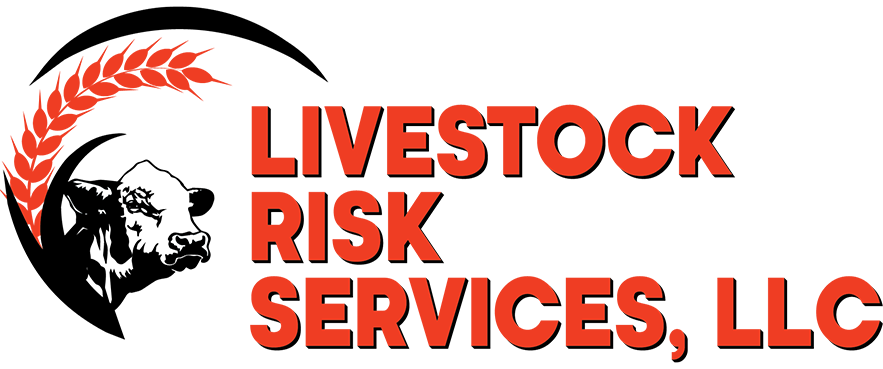Unlocking Growth Potential: Bagley Risk Management Approaches
Understanding Animals Threat Defense (LRP) Insurance Coverage: A Comprehensive Guide
Navigating the realm of animals threat defense (LRP) insurance can be an intricate venture for lots of in the farming market. From exactly how LRP insurance functions to the numerous protection alternatives available, there is much to reveal in this detailed guide that can possibly form the method livestock manufacturers approach risk management in their organizations.

How LRP Insurance Functions
Sometimes, comprehending the mechanics of Animals Danger Security (LRP) insurance can be complicated, yet damaging down how it functions can provide clarity for farmers and ranchers. LRP insurance policy is a threat management device designed to safeguard animals manufacturers versus unanticipated cost declines. The plan allows producers to establish an insurance coverage degree based upon their certain requirements, picking the number of head, weight array, and protection rate. Once the plan is in area, if market rates fall listed below the coverage rate, producers can sue for the distinction. It's important to note that LRP insurance is not a revenue assurance; rather, it concentrates exclusively on rate danger defense. The insurance coverage period commonly ranges from 13 to 52 weeks, providing versatility for manufacturers to pick a period that straightens with their manufacturing cycle. By utilizing LRP insurance policy, farmers and breeders can alleviate the monetary threats connected with rising and fall market rates, guaranteeing greater stability in their operations.
Eligibility and Coverage Options

When it comes to insurance coverage alternatives, LRP insurance coverage provides producers the flexibility to choose the coverage degree, insurance coverage duration, and endorsements that finest fit their risk management demands. By recognizing the qualification requirements and coverage alternatives readily available, livestock manufacturers can make enlightened decisions to take care of risk effectively.
Benefits And Drawbacks of LRP Insurance
When evaluating Animals Danger Defense (LRP) insurance, it is vital for animals producers to weigh the negative aspects and benefits fundamental in this threat monitoring tool.

One of the key benefits of LRP insurance is its ability to offer protection versus a decrease in animals prices. Additionally, LRP insurance policy supplies a level of flexibility, enabling producers to customize protection levels and policy periods to fit their certain needs.
One restriction of LRP insurance is that it does not shield versus all types of threats, such as disease episodes or all-natural disasters. It is critical for producers to carefully examine their private threat exposure and economic situation to establish if LRP insurance is the appropriate danger monitoring device for their operation.
Recognizing LRP Insurance Coverage Premiums

Tips for Optimizing LRP Benefits
Taking full advantage of the advantages of Livestock Threat Protection (LRP) insurance requires critical preparation and positive danger monitoring - Bagley Risk Management. To take advantage of your LRP coverage, think about the adhering to ideas:
Regularly Examine Market Conditions: Remain educated concerning market trends and cost changes in the livestock market. By monitoring these variables, you can make educated decisions concerning when to purchase LRP insurance coverage to protect versus possible losses.
Establish Realistic Protection Degrees: When choosing coverage degrees, consider your production prices, market value of animals, and possible threats - Bagley Risk Management. Establishing reasonable insurance coverage levels makes sure that you are appropriately shielded without overpaying for unnecessary insurance coverage
Expand Your Protection: Rather than depending only on LRP insurance policy, think about diversifying your risk management approaches. Integrating LRP check this with other risk monitoring tools such as futures agreements or alternatives can supply over here extensive insurance coverage versus market uncertainties.
Evaluation and Change Insurance Coverage Frequently: As market problems change, occasionally evaluate your LRP coverage to guarantee it lines up with your current threat exposure. Readjusting protection levels and timing of acquisitions can aid enhance your risk defense approach. By adhering to these suggestions, you can make best use of the benefits of LRP insurance coverage and protect your animals operation against unpredicted risks.
Verdict
Finally, animals risk protection (LRP) insurance is a useful tool for farmers to handle the economic risks linked with their livestock operations. By recognizing how LRP functions, qualification and coverage choices, in addition to the advantages and disadvantages of this insurance coverage, farmers can make enlightened decisions to protect their incomes. By very carefully thinking about LRP premiums and executing methods to take full visit our website advantage of advantages, farmers can minimize potential losses and ensure the sustainability of their procedures.
Livestock producers interested in obtaining Animals Risk Protection (LRP) insurance policy can check out a range of qualification standards and insurance coverage options tailored to their particular livestock procedures.When it comes to coverage options, LRP insurance coverage uses manufacturers the versatility to pick the insurance coverage degree, insurance coverage duration, and recommendations that ideal suit their threat monitoring demands.To understand the details of Animals Threat Security (LRP) insurance completely, comprehending the elements influencing LRP insurance coverage premiums is critical. LRP insurance policy premiums are established by numerous elements, including the insurance coverage level chosen, the expected price of livestock at the end of the insurance coverage period, the type of livestock being guaranteed, and the length of the insurance coverage period.Testimonial and Change Protection Consistently: As market problems transform, regularly evaluate your LRP insurance coverage to ensure it lines up with your existing danger exposure.